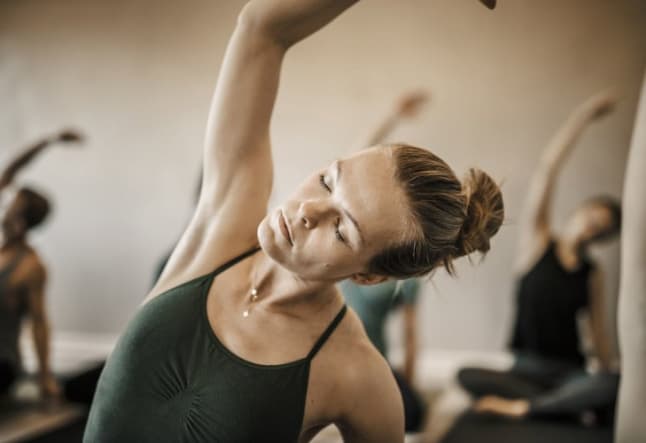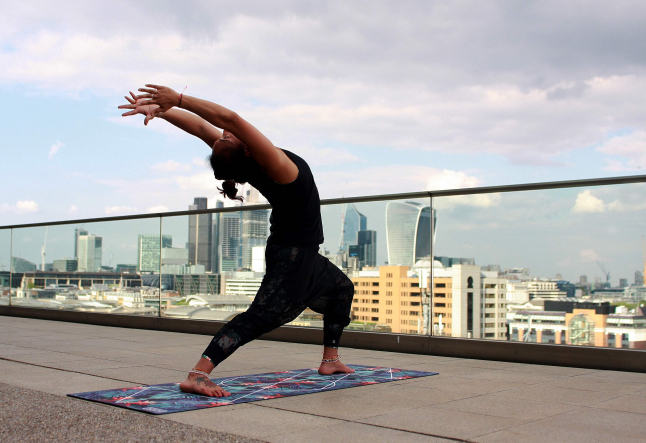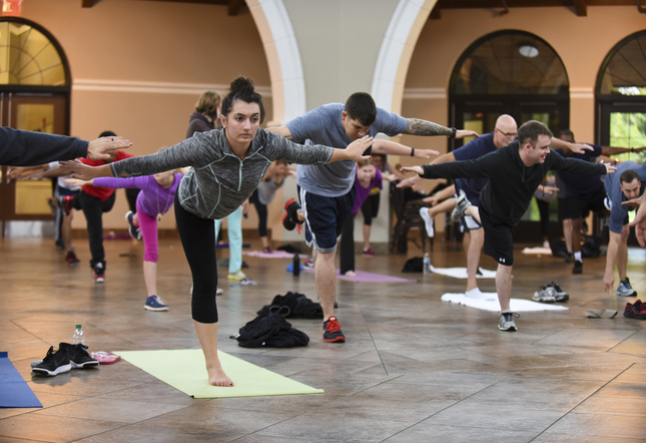yoga and meditation for people with post-traumatic stress disorder

an alternative approach to ptsd
Techniques from the past
It took a long time to bring to the West ancient techniques from the East, inextricably linked to the physical and mental balance, to the healing and “well-being” of people. In our time, these techniques are coming again, helping to deal with the stress coming from traumatic experiences and especially after recovering from Covid-19.
What is Yoga?
Yoga is a system and a combination of specific physical body postures (asanas) with breathing techniques (pranayamas) aimed at the ultimate goal of health and well-being.
Also read >>> zafu meditation cushion – choosing the right one
Yoga as a therapeutic means to physical and psychological diseases
The effectiveness of yoga is now evident in all spectrums of physical and mental recovery.
Yoga has been indicated in so many ailments and diseases such as back, neck, and head pains, rheumatoid arthritis, osteoarthritis, allergies, asthma, hypertension, and diabetes, thyroid problems, cancer, neuropsychiatric disorders, such as depression, addictions, panic attacks, obsessive-compulsive disorder, obsessions, epilepsy, etc.
Yoga expansion to the world
Based on primitive Indian knowledge and science, yoga has become a reliable therapeutic tool, which is now recommended, even in the western world’s largest hospitals and clinics.
Related>> Yoga & Meditation Teacher Training
The real results of this practice testify to its use across the globe.
Yoga and spirituality
Of course, yoga is not just a technique but also a spiritual practice. It is based on the assumption of the Existence of a psychosomatic system, inextricably intertwined with the Atman, the Spirit, and the Higher Power (Existence of God, if you prefer). The postures (asanas) are seen as different forms of the human body, and breath (pranayamas) connect and inflate life in the body. Therefore, it is a sacred ritual that restores humans’ connection with their life energy and Existence.
Also Read>>> How yoga can help with PTSD
Meditation as a spiritual technique
Meditation, respectively, with yoga and often combined with it, aims to calm the mind from the daily storm of thoughts produced. Racing thoughts means we are incapable of controlling the flux of ideas and thoughts that happens involuntarily.
An existential means to the psychopathological thinking
A significant symptom in psychosis is perpetual thinking; however, unfortunately, the same thing happens to most people, without (at least apparent) any psychopathology. The human mind has been relying for centuries on “I think; therefore I exist,” escaped from its “normal” function, into an endless, associative, automatic chain of thoughts, which literally occupy and haunt our mind.
Reconstitution of the human mind
The gift of meditation to humanity is precisely the reconstitution of the mind. Let’s call it detoxification from useless thoughts and a tool for profound observation and the creation of Silence. Silence is healing, it is love, it is peaceful, connected, and is God.
Observation as a breath
Are unbridled thoughts based on fear, or are fear and anxiety caused by thoughts? These questions are erased by meditation as introducing observation to the human condition of Existence re-establish Silence within us.
Meditation is the breath of our minds.
Inhales toxic thoughts and exhales pure Silence.
The post-traumatic stress experience
The PTSD definition
By continuing and talking more generally about post-traumatic stress disorder, we mean a state of neurosis that can last for several weeks or months, usually after experiencing a severe accident, violence, traumatic behavior by others, or life-threatening. Having suffered a severe shock, this person experiences deregulation on a mental, psychological, and physical level (Brunet A., Akerib V., Birmes P. 2007).
Physical level
At the physical level, we have disturbances in sleep, loss of appetite or sex, aches, pains, malaise, headaches, sweating, and increased substance use.
Also Read>>> How yoga helps heal in trauma recovery
Emotional-psychological level
On the emotional-mental level, the person experiences sadness, despair, sadness, terror, denial, hallucinations, anxiety, intense anxiety, nervousness, instability, ambivalence, invasion of strange thoughts, flashbacks of traumatic events, and memories of other older traumas.
Covid-19 and PTSD symptoms
More specifically, many of the people who became infected with the Covid-19 virus, especially those intubated and found near death, survived, presented, and present in no small extent post-traumatic stress and many of the above symptoms. We can undoubtedly add anthropophobia, nosophobia, hypochondriac tendencies, claustrophobia, fear of inclusion, and generally everything associated with isolation, inclusion, disease, and death.
A body-spirit disconnection
The point that unites the body and the mental-emotional network is put continuously on during post-traumatic stress. In other words, there is a disconnection of the body from the spirit, with the dominant deregulation of the nervous system.
The healing procedure
Yoga groups for reintegration to reality
Here comes yoga to initially provide a social field, where the injured person reconnects with the community through group practice and first moves away from his existential isolation. Group practice offers protection and the ability to revive lost security. Yoga then balances contact with it in the physical realm. It grounds the person and brings him closer again to his real senses. In other words, it unifies and restores the individual to reality.
Asanas for reactivation
With the postures (asanas) and the breathing techniques (pranayamas), the deregulation gradually improves, and the person is reconnected with the joy of life. The negation is smoothed out by the continuous flow that comes in and out of it, as the person reactivates his body and unblocks the blockages created during and after the event.
Covid-19 and meditation
So, when the Autonomous Nervous System is normalized and the reactions are reduced, the sufferer can finally relax, calm down, and gradually adjust to his daily routine. With meditation, the person suffering from post-traumatic stress can benefit in many ways.
A thought observer
So first, you need contact with the body again to balance the distorted energy. This is a necessary condition for meditation. The mind must reach a point where excess energy has evaporated to enter a profound observation and attention state.
Disidentification of heavy emotions
The more the chain of endless thoughts is disconnected, the more the person is disconnected from fear, anxiety, fear, and anxiety that occur in post-traumatic stress. The meditating person slowly understands everything that has been deregulated and everything that comes back. Identification from obsessive thoughts finally frees the person from feelings of guilt, terror, and inadequacy.
Back to life
In people who have emerged victorious from the battle with the coronavirus but suffer from post-traumatic stress, yoga and meditation contribute to the gradual return to reality. The necessary attention does not mean phobia and fear for life. It is essential to breathe like a steady stream of energy to integrate into groups and re-socialize, and of course, to observe the thoughts caused by this closeness to death.
Conclusion
In conclusion, the balancing practice of yoga and the detoxification of thoughts through meditation consist of a very effective treatment for all the individuals experiencing post-traumatic stress, especially those recovering from Covid-19.


